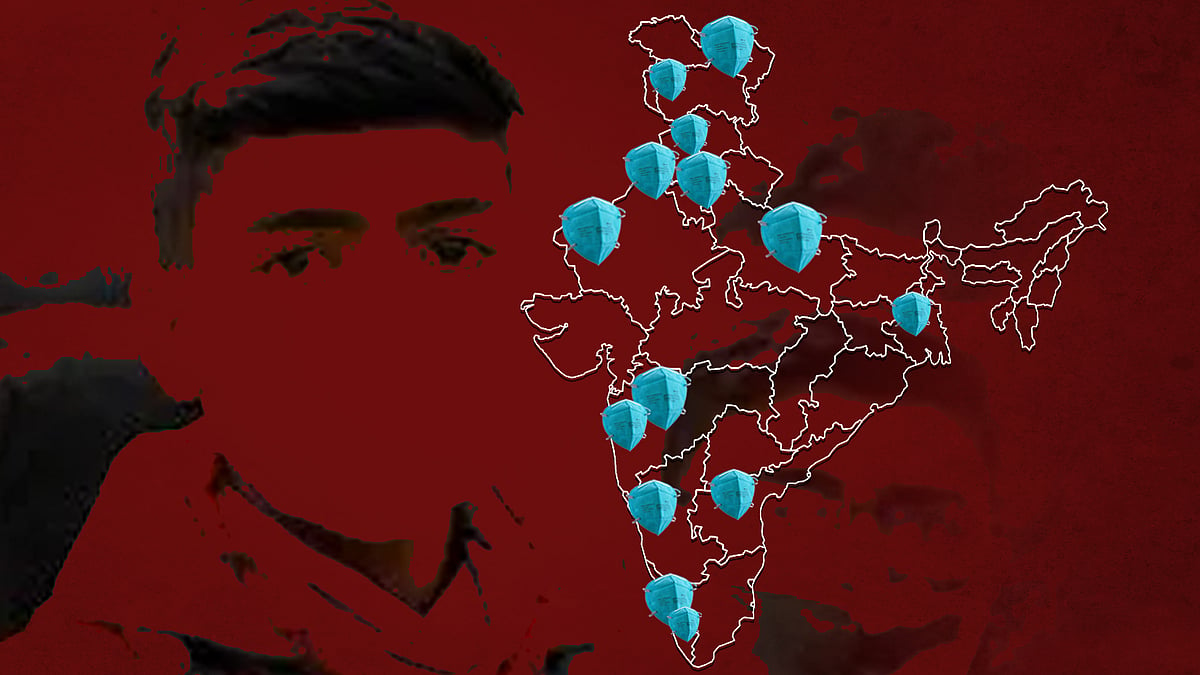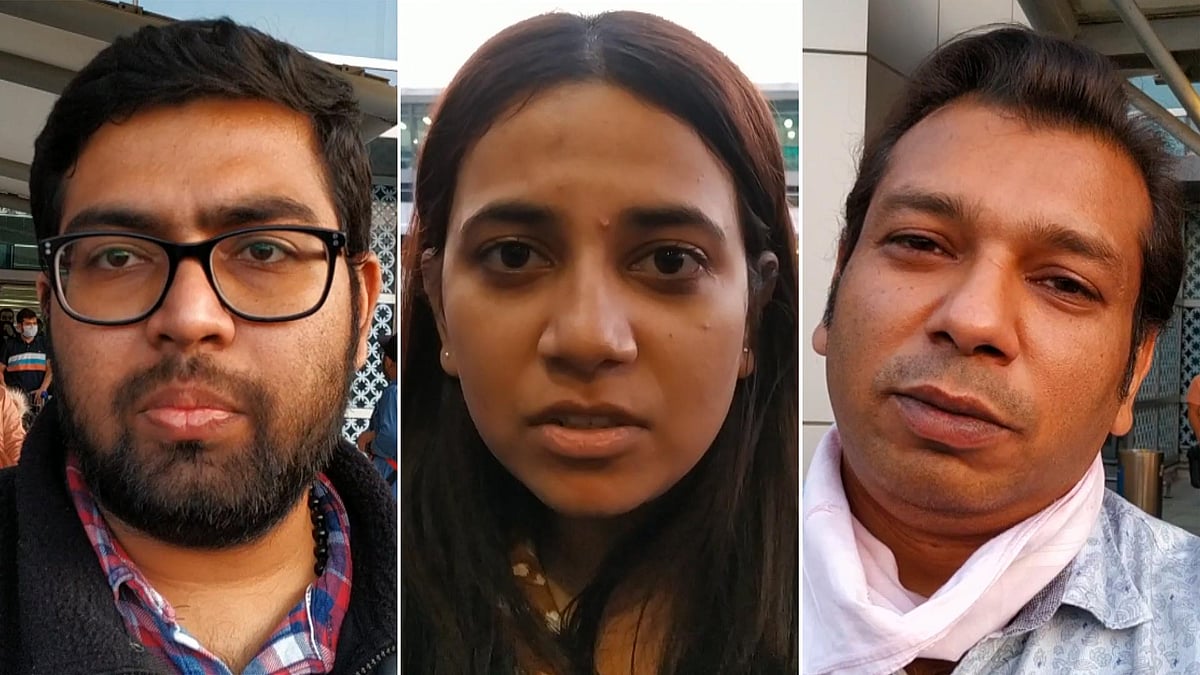Social distancing explained: For ‘immunity’ freaks and runaway human virus vehicles
Group morning walks because the gym is closed? Hosting crowded press conferences? You really need to stop.
The entire world is slowly going into lockdown. Governments are banning travel and advising people to stay indoors. We, as a species, are under attack from a pesky little virus that spreads really, really fast and also kills vulnerable folk.
Doesn’t it feel a bit surreal?
We’ve seen this in movies (usually involving zombies), we’ve played fun mobile games about it (love this game), and there is even an elaborate board game (love this one too) which involves a pandemic scenario. In our heads, all things are amusing but they’ve been subtly telling us what to do when a non-curable virus hits the entirety of the planet.
The answer is: Isolation, isolation, isolation. And run from zombies but even that should, ultimately, result in isolation.
So, you might be someone who is doing the right thing. You’ve played all the games, watched all the movies, and have learnt your lesson. You are self-isolating. You’ve turned your living room into a bunker, stocked up supplies for months, and are prepared for doomsday.
But then, every once in a while, you see news updates like these.

Support Independent Media
The media must be free and fair, uninfluenced by corporate or state interests. That's why you, the public, need to pay to keep news free.
ContributeClearly, some people don’t understand the point of isolation and why it’s important. So, let’s talk about social distancing, shall we?
You must’ve heard this term, social distancing, being thrown around lately but it’s important to know why it’s being thrown around. This is something you must do, not just for yourself, but also for the people around you or in your social circles.
Hopefully, if you know someone who is attempting to “build immunity” by going to a crowded location and lifting more weights than usual because ANI photographers are waiting in the bushes to take your picture, you can send this piece to them. Send this piece to your boss too, if you haven’t gone into work-from-home mode yet.
When should you socially distance?
Allow me to use a recent example to explain when you should activate the social distance button in your head.
On March 17, West Bengal’s first coronavirus patient tested positive in Kolkata. The patient is a student at Oxford University who lived with three other people in London who were infected. He returned to India, avoided quarantine at the airport because “tu jaanta nahi meri maa kaun hai”, and then had two days of fun frolicking around in the city before he got admitted and tested positive.
His mother, incidentally, is a top ranking bureaucrat in the Bengal government. He went to meet her at the chief minister’s office, and carried on with his social teenage activities until he was forced to get admitted in a hospital.
Coronavirus, in case you haven’t figured it out yet, is highly contagious. Worldwide cases have crossed two lakh and these are only the reported ones.
In India, this is the situation.
Mind you, these numbers only cover people who are getting tested. Reports indicate that currently authorities are testing around 90 people daily which is much less than in countries like South Korea, where 15,000 people are being tested every day. At the moment, Indian authorities are only testing people with travel history to countries that have positive COVID-19 cases, and those who have come in direct contact with such travellers.
Now, this is where you go for social distancing. In this situation, it’s always a good idea to assume you have the virus and make every attempt not to spread it further.
Simple things can be done. For instance, if you have come from a country where there are reports of coronavirus cases popping up, maybe don’t resist the officials who are telling you to get admitted in a hospital and undergo tests. “Tu jaanta nahi mera baap kaun hai” card only works on other authority-conscious humans, it doesn’t work on the virus you’re carrying.
Here are a few more instances of what not to do.
Try not to gather in large crowds, especially when someone is talking about social distancing.
It’s a bit...counterproductive is all I’m saying.
Try not to make reporters gather in large crowds for hour-long press briefings about a disease that spreads when people gather in crowds. Do webcasts instead!
Oh, and don’t assault people when they sneeze in public.
By doing this, not only are you hurting someone, which is bad, but if you’re a human whose humanity has withered away due to the consistent consumption of WhatsApp forwards, at least think about self-preservation. By beating someone for infecting others, you are also increasing the chances of getting infected yourself. Then when you beat the next person for his religion, caste, facial features, skin colour, social status, favorite Bigg Boss contestant, and whatnot, that person might get infected too.
So, general advice for people with low patience, high ignorance, and a tendency to indulge in violence: just keep away from people in general for a while.
And, my good people of Nagpur, there is a reason why they closed gyms. The entire point is not to prevent you from “building immunity”, but to avoid large gatherings.
In this case, you are gathering in crowds — which is bad. No matter how much immunity you build, if a buffed-up person in that crowd sneezes all over your weights, there is a chance you’ll get infected.
If you’re going to go out in the sun to kill the pesky virus in your body, as advised by our hon’ble minister…
…then make sure you do it alone. Don’t gather a crowd, start making bhel-puri and turn it into a picnic please.
Just maintain a healthy social distance in these situations is all.
Why should you socially distance?
The first reason is self-preservation. It’s a simple matter of doing everything you can to avoid catching the virus yourself.
The second reason is for you to avoid becoming a vessel for the virus. The virus is able to spread because human bodies act as vehicles for it, rapidly spreading from one body to another. So even if you do not show symptoms or have a mild form of the flu, you might actually be carrying coronavirus which will be transmitted to someone else.The next person it goes to might be vulnerable and may show severe symptoms, end up in the hospital, even die.
The third reason is the collateral damage a pandemic like this can have on our healthcare system. Say you carry the virus and show flu-like symptoms. Thinking it’s a seasonal cold, you go about your business, sneezing everywhere, touching surfaces, and infecting people. Now, a few of those infected folk might get severely affected and would need to visit the hospital, perhaps even get admitted.
Coronavirus infections aren’t the only thing hospitals are treating at any given point of time. There are accident victims and people with other ailments getting treatment too. These are regular cases that doctors deal with on a daily basis. But in a pandemic situation, their priorities change. More and more virus patients start flooding the hospitals, so people facing other life-threatening ailments – some of whom are immunocompromised – suffer and get affected by the crowding.
Entire healthcare systems can collapse in situations like these. Patients without infection might end up dying as a consequence of someone else who has the virus.
This last point is vital, and something we all need to understand. By going outside, you’re becoming an additional vehicle which the coronavirus can ride on. Countries like Italy have gone into lockdown for this very reason; they don’t want human vehicles to be around and spread the disease further.
In South Korea, a patient called “Patient 31” was responsible for a massive number of infections just because she was wandering around for a week with the virus. At the two worship services attended by Patient 31, more than 1,000 people were present. They sat on the floor, elbow-to-elbow and knee-to-knee, for as long as two hours. This one person turned an outbreak in South Korea into a full-blown epidemic. From 31 cases, it went up to 8,400-plus cases in just a few days because one person was out and about, living her life.
Simply put, don’t be that person.
BONUS: The Adityanath government is allowing a massive gathering in Ayodhya next week where 10 lakh people are expected to gather. Totally awesome.
Another point to think about is who will be infected. Suppose the infection spreads at, say, a major power plant and crucial employees responsible for running the plant start falling sick. The impact it can have on an entire city is unimaginable. These sound like catastrophic scenarios, but they really aren’t that extreme anymore. Entire countries are going into shutdown, and India seems to be heading in that direction too.
And if 1,500-odd words still isn’t enough to convince you, here’s a handy video that breaks down the symptoms of the coronavirus and the precautions you need to take.
So, to ensure a healthy Bharat, just lock yourself in and maintain social distance.
 How Indian states are gearing up to tackle the coronavirus pandemic
How Indian states are gearing up to tackle the coronavirus pandemic
 When coronavirus screening stranded flyers for 9 hours at Delhi airport
When coronavirus screening stranded flyers for 9 hours at Delhi airport

Power NL-TNM Election Fund
General elections are around the corner, and Newslaundry and The News Minute have ambitious plans together to focus on the issues that really matter to the voter. From political funding to battleground states, media coverage to 10 years of Modi, choose a project you would like to support and power our journalism.
Ground reportage is central to public interest journalism. Only readers like you can make it possible. Will you?
